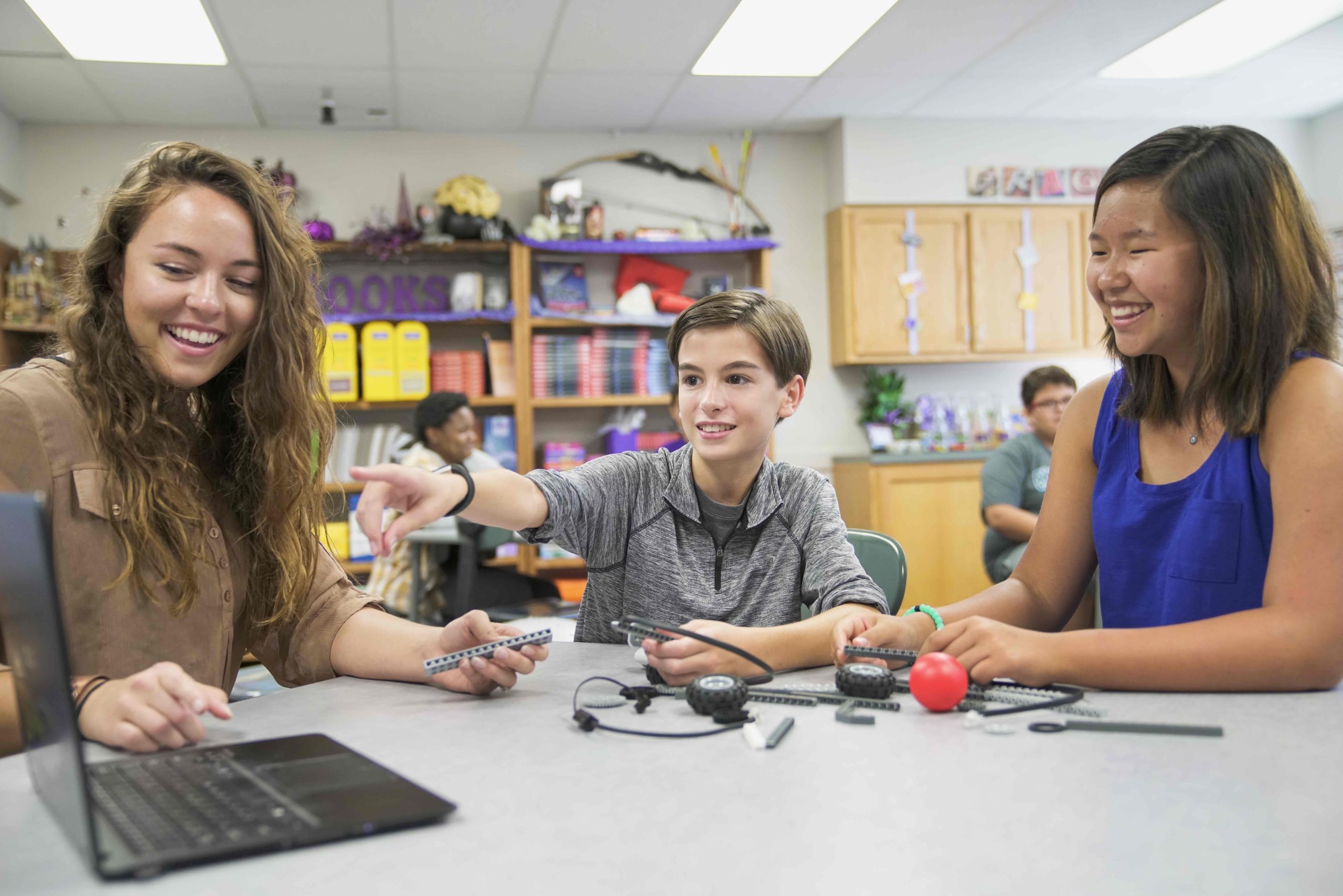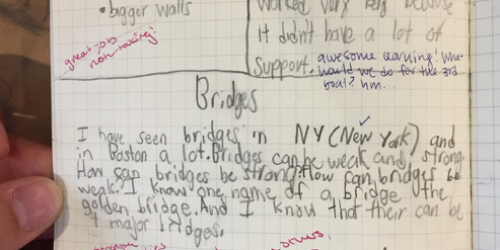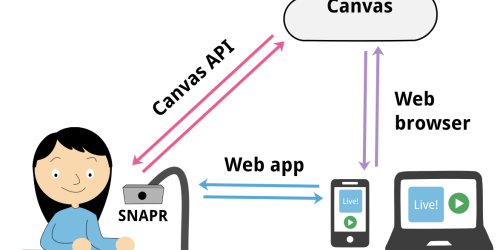This blog entry features a summary and highlights from an article entitled Reflective Decision‐Making in Elementary Students’ Engineering Design by Kristen Bethke Wendell, Christopher G. Wright, and Patricia Paugh published in the Journal of Engineering Education. It’s a great way to get introduced to the research happening at Tufts CEEO.
By Elissa Milto, Director of Outreach
Reflective Decision-Making in Elementary Students’ Engineering Design
A key feature of engineering design is collaborative, deliberate decision-making that takes into account information about design options. K‐12 students need opportunities for this kind of decision-making if they are to meet the learning standards for engineering outlined in the Next Generation Science Standards. We conducted a qualitative study investigating how urban elementary students enact reflective decision-making in a formal engineering design curriculum in order to propose and operationalize a definition of reflective decision-making among elementary students. While the term reflective can mean many things, we allude to reflection that occurs during the engineering design process, or decision-making with a reflective stance.
Participants in our study included four elementary teachers and their students located in four schools across two urban school districts. We analyzed peer-to-peer discourse during seven Engineering is Elementary design challenges and found evidence of six reflective decision-making (RDM) elements. These elements suggest that during engineering design tasks, young learners working in small teams can respond productively to opportunities for engaging in sophisticated discourse.
Table 1: This table lays out the first three RDM elements, the question students aim to answer in each manifestation of the RDM element, and the patterns of discourse involved in answering each question.
| Reflective Decision-Making Element | Question Students Aim to Answer | Patterns of Discourse |
| 1: Articulate Multiple Solutions | What solutions should we consider? | Deliberate turn-taking to voice individual ideas Drawing of several design plans Clarifying how each design proposal is distinct Acting out multiple ways to use physical materials |
| 2: Evaluate Pros and Cons | How likely is it that the solutions will be successful? | Reference to constraints: size, strength, and other properties of available materials Reference to criteria: expected performance of prototype Critique of proposed prototypes for feasibility of fabrication and use |
| 3: Intentionally Select a Solution | Which solution is most likely to optimally solve the problem? | Voting on team members’ proposals Creating detailed materials list Assigning roles for making detailed design plan Shifting to plan details such as dimensions Synthesizing several individuals’ ideas into a new merged proposal |
We observed three second-grade students, David, TJ, and Eliot, who were designing a device to clean polluted water in the unit “Water, Water, Everywhere.” As they sat at a table with a bin of materials, they discussed the following:
David: Yeah, you could put this [picks up a stack of coffee filters from the materials
bin] right in, um—
TJ: No, we’re meeting about talking—fixing things together, David.
David: I know, I’m going to put this [puts coffee filter back in the bin and picks
up piece of wire mesh screen] over here [places screen on top of the two-
liter bottle] and if we could //
TJ: // No, no, no, listening together. //
Eliot: // No, talking to draw a picture [places hand forcefully on a handout for
planning the design]. //
We see evidence of the first RDM element in David’s physical manipulation of materials and in TJ and Eliot’s emphasis on oral sharing of multiple ideas. Despite disagreeing over whether David should be handling the physical materials at this point, we see evidence of the second RDM element as the students use the actual coffee filter to deliberate the pros and cons of David’s proposal. As they predict how the coffee filter might perform, they consider the constraints of the available materials, including the size of the water bottle and the strength of the paper filter:
TJ: See, it doesn’t fit. [Picks up two-liter bottle, turns it upside down, and
places the coffee filter gently onto the opening of the bottle to show
that it does not slip easily into it.]
David: Yes, it does, if you push it in there.
TJ: No.
Eliot: It will rip.
David: No it won’t, watch this. [Picks up coffee filter and tries to pick up two-
liter bottle again.]
Eliot: [Putting his hand on the bottle] Stop, David!
TJ: [Pointing to Eliot] Okay, your turn.
Table 2: This table lays out the last three RDM elements.
| Reflective Decision-Making Element | Question Students Aim to Answer | Patterns of Discourse |
| 4: Retell Performance of Solution | Did the prototype meet the design requirements? | Running commentary as test occurs Pointing out flaws while referencing design sketch Reminding team members of test results Recasting negative test results as positive Physically reenacting performance of a prototype |
| 5: Analyze Solution According to Specific Evidence | What made the prototype more or less successful? | Using critiques from other teams to make sense of design flaws Interpreting test results as information about physical properties of materials Describing test results from the design user’s perspectives Proposing change of material |
| 6: Purposefully Choose Improvements | What changes should we make? | Altering design sketch Proposing change of material Justifying new materials selection by improvements in design’s safety or usability Demonstrating partially implemented improvement Soliciting teammate cooperation in making physical changes |
We observed fifth-grade students, Westria and Naomi, who were designing a hand pollinator to pick up and drop off as much pollen (modeled by baking powder) as possible in the unit “The Best of Bugs.” They created a hand pollinator with a craft stick and pom-pom and found it delivered a noticeable dusting of baking powder to their testing paper, so they felt their project was complete. A researcher approached them to see how it was going and prompted them to iterate. They immediately shifted from passive waiting to animated discussion, where we see evidence of the sixth RDM element in their “purposefully choosing improvements”:
Westria: I don’t think, what if we don’t need to improve?
Researcher: I bet you can think of a way that it could pick up even more [speaker’s emphasis]. I bet there’s something you could do to adjust it to pick up even more.
Naomi: [Shakes head yes.]
Westria: [Gasps.] What about a pipe cleaner?
Naomi: [Shakes head yes.] Oh, like a pipe cleaner, you just [demonstrating with hands] like roll it around.
Westria: You could put the fuzzy ball on it too.
Naomi: So it picks up more.
Westria: We could put the fuzzy ball after.
Naomi: Except the wire would change this thing [demonstrates with hands].
The data we analyzed for this study suggests that during both planning and redesign, elementary students’ reflective decision-making involves taking stock of prior actions, analyzing input gathered from teammates and designs, and deliberately and collectively taking a next step. The RDM patterns described above suggest the kinds of student discourse that teachers in elementary classrooms might notice, support, and build upon as their students tackle collaborative engineering design tasks. Teacher education and professional development programs should equip teachers with knowledge of the RDM heuristic and continue to explore strategies to support students in approaching engineering design as RDM.
Further research is needed to describe the range of ways each RDM element emerges across different grade levels, across different English language learner status, in classrooms where students have different cultural backgrounds, across different Engineering is Elementary units and other curricular approaches to elementary engineering as well as to develop tools and strategies that support reflective decision-making by all students. For the full article, click here.




